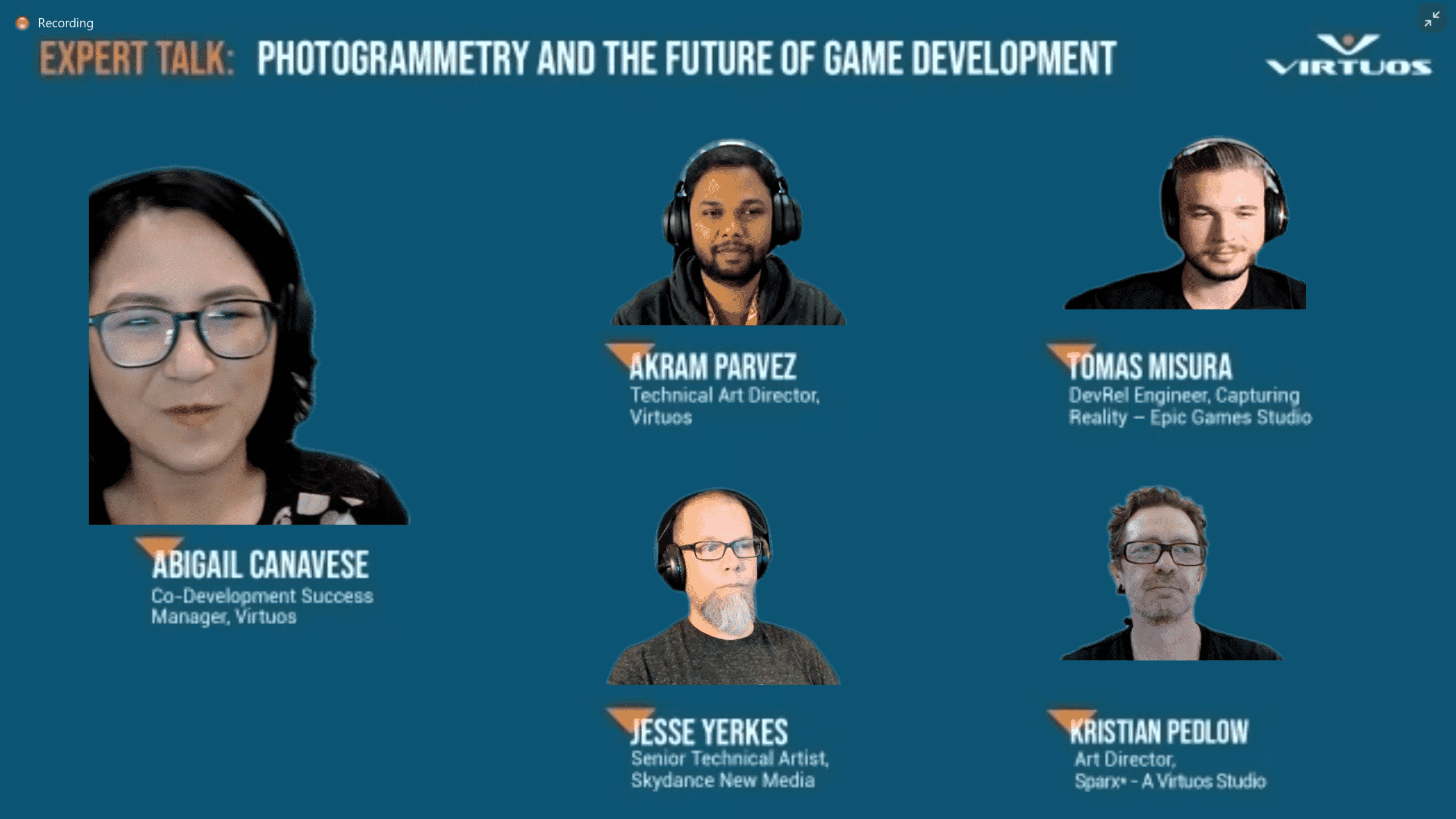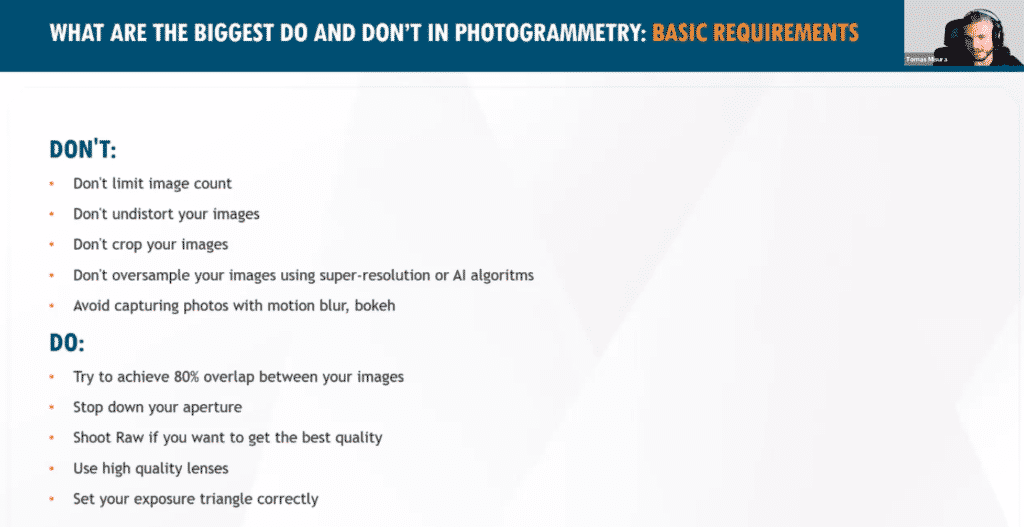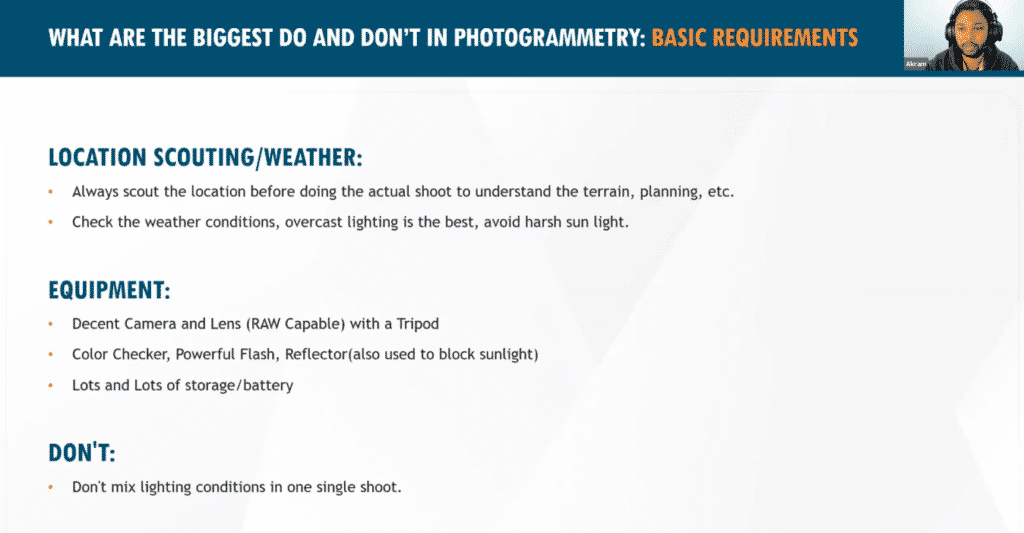This event is the first of a webinar series of Expert Talks organized by Virtuos, aimed at industry professionals and enthusiasts alike to discuss topics revolving around the future of game development.
Photogrammetry has been around for many years, but it wasn’t until recent years that the technology became increasingly popular in video game development. It allows developers to transplant real-world environments into ultra-realistic graphics, creating some of the most vivid worlds in the AAA games that we see today.
It is also one of the technologies that Virtuos uses in our various studios to produce highly detailed environments in various end-to-end game production projects.
On 21 October, Virtuos organized the first session of our webinar series, Expert Talks, themed “Photogrammetry and the Future of Game Development”, to discuss how photogrammetry is applied in games to build realistic worlds. The webinar featured the following industry veterans who discussed and shared their insights into the development of photogrammetry as a relevant tool in the video game industry:
- Moderator: Abigail Canavese, Co-Development Success Manager, Virtuos
- Speaker: Akram Parvez, Technical Art Director, Virtuos
- Speaker: Kristian Pedlow, Art Director, Sparx* – A Virtuos Studio
- Speaker: Jesse Yerkes, Senior Technical Artist, Skydance New Media
- Speaker: Tomas Misura, DevRel Engineer, Capturing Reality – Epic Games Studio

Abigail introduces the speakers to the audience attending the webinar
Applications of Photogrammetry
Kristian, who has been working in the video game industry for the past 25 years, shared that photogrammetry has opened up many possibilities for computer graphics and embodying realism in games. “My primary art style is realism – I’ve been chasing realism in CG for a quarter of a century. Explaining the deep interest behind the topic, he added:
“When photogrammetry came along, it just made that possible. It’s the tool to get us the realism that we’re always striving for.”
For Virtuos and Sparx*, Kristian shared that the studio had initially been using photogrammetry in film asset work, and it wasn’t until late 2018 when the studio processed and de-lit data and then rebuilt entire locations in Unreal for the first time for Disney Plus’ The Mandalorian, that photogrammetry was seriously considered as a tool for creating realistic 3D objects efficiently. Now, to achieve realistic graphics for certain game environment, the team builds entire location for event single shoots, for both games and film projects.

However, while photogrammetry is a great tool to create realistic graphic assets for game environments, using the tool is not as simple to use as it may appear to be, Akram, a technical art director at Virtuos pointed out. “One of the biggest challenges in photogrammetry is not actually when doing it, but when using (photogrammetry) in combination with (other) assets that you create,” Akram shared about the challenges faced in applying photogrammetry in games. He added that photogrammetry assets are usually very high in detail, and cannot be directly combined with existing assets in its raw form.
“How do you take an existing photogrammetry asset and put it into an environment where most of that is not photogrammetry? You’ve created it by hand – so how do you ensure its consistency with handcrafted assets and photogrammetry assets? That’s the big challenge, not doing photogrammetry, but how we apply it.”
Do’s and Don’ts of Photogrammetry
In one of the webinar’s segments, speakers shared their do’s and don’ts for photogrammetry.
Tomas, a DevRel engineer at Capturing Reality – Epic Games, who is also a professional photographer, had several tips on image properties and equipment to use. He also shared his personal set of rules on how to take good photos that would likely produce satisfactory results in photogrammetry.

Tomas highlighted in his explanation that users should avoid taking panoramic photos (see below) as the results would not record accurate reading information for the photogrammetry software.

Instead, he recommended users to create stereo-pairs – taking multiple views of a scene side by side as seen below, as it provides a more accurate reading of the target environment.

Create stereo-pairs and take oblique shots, to generate multiple views of a scene side by side
Akram, a technical art director at Virtuos, shared that photogrammetry itself is “quite easy”, and can even be done with a smartphone. However, much higher quality is expected in games, especially AAA titles in the current state of the video game industry. When it came to his personal do’s and don’ts in photogrammetry, he highlighted some pointers and basic requirements for those embarking on their on-site shoots:

Kristian also shared his own set of rules and tips, pointing out the importance of keeping references of details such as textures and roughness of certain environmental objects post-shoots.

Exciting Tech Developments in Photogrammetry
Jesse, a senior technical artist from Skydance New Media, highlighted that the improving software and camera hardware has made it easier for developers to create high-quality graphics. He added that automation was something he was excited about. “Just being able to take a drawing somewhere and have something pre-planned…with just complete AI capture – you point it at an object and it figures it out for you.”
“Every year, the software and cameras get so much better and so much easier for us.”
Akram added that he was looking forward to machine learning applications in photogrammetry, where developers would be able to create characters from a single image. “I’m looking for applications, where [the AI software] can fill holes in environments, that’s something I’m looking forward to, in terms of features,” he said.
Virtuos would like to thank all speakers and attendees for participating in our webinar. We hope it was an insightful session for everyone and look forward to advancements in game creation, making the games we develop better together.
To stay updated on the next Virtuos Expert Talks Webinar, reserve your spot by pre-registering on our website here.
- For business enquiries, please contact: [email protected]

